Gregorio Martínez Pérez
Simulating Cyberattacks through a Breach Attack Simulation (BAS) Platform empowered by Security Chaos Engineering (SCE)
Aug 05, 2025Abstract:In today digital landscape, organizations face constantly evolving cyber threats, making it essential to discover slippery attack vectors through novel techniques like Security Chaos Engineering (SCE), which allows teams to test defenses and identify vulnerabilities effectively. This paper proposes to integrate SCE into Breach Attack Simulation (BAS) platforms, leveraging adversary profiles and abilities from existing threat intelligence databases. This innovative proposal for cyberattack simulation employs a structured architecture composed of three layers: SCE Orchestrator, Connector, and BAS layers. Utilizing MITRE Caldera in the BAS layer, our proposal executes automated attack sequences, creating inferred attack trees from adversary profiles. Our proposal evaluation illustrates how integrating SCE with BAS can enhance the effectiveness of attack simulations beyond traditional scenarios, and be a useful component of a cyber defense strategy.
S-VOTE: Similarity-based Voting for Client Selection in Decentralized Federated Learning
Jan 31, 2025Abstract:Decentralized Federated Learning (DFL) enables collaborative, privacy-preserving model training without relying on a central server. This decentralized approach reduces bottlenecks and eliminates single points of failure, enhancing scalability and resilience. However, DFL also introduces challenges such as suboptimal models with non-IID data distributions, increased communication overhead, and resource usage. Thus, this work proposes S-VOTE, a voting-based client selection mechanism that optimizes resource usage and enhances model performance in federations with non-IID data conditions. S-VOTE considers an adaptive strategy for spontaneous local training that addresses participation imbalance, allowing underutilized clients to contribute without significantly increasing resource costs. Extensive experiments on benchmark datasets demonstrate the S-VOTE effectiveness. More in detail, it achieves lower communication costs by up to 21%, 4-6% faster convergence, and improves local performance by 9-17% compared to baseline methods in some configurations, all while achieving a 14-24% energy consumption reduction. These results highlight the potential of S-VOTE to address DFL challenges in heterogeneous environments.
ProFe: Communication-Efficient Decentralized Federated Learning via Distillation and Prototypes
Dec 15, 2024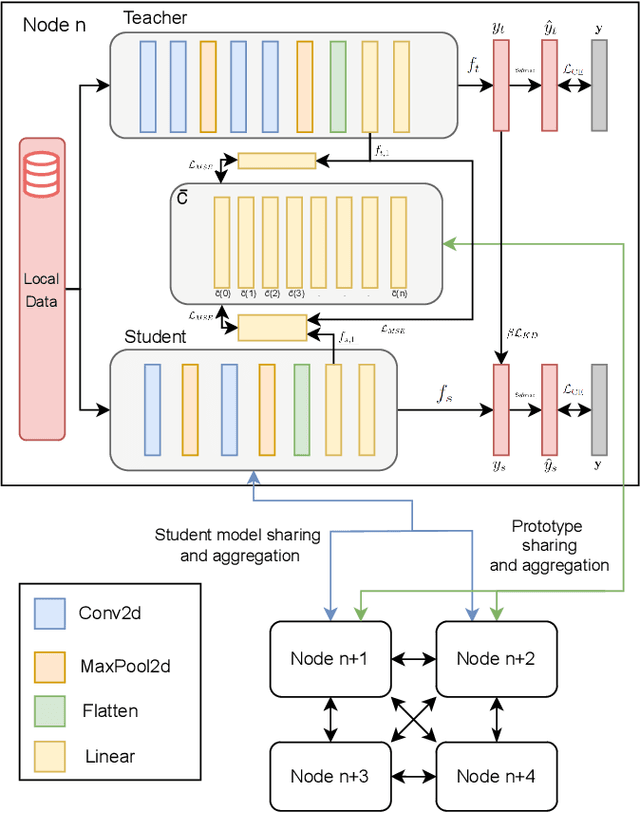
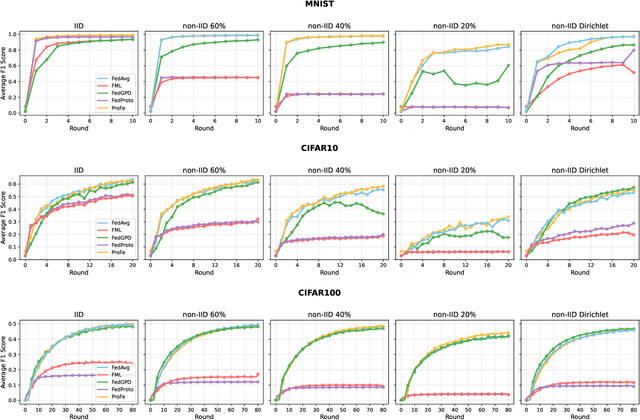
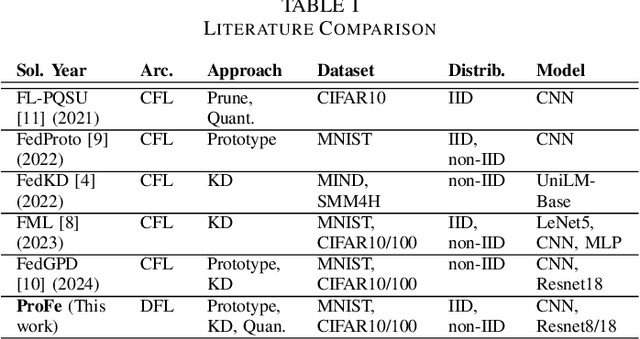

Abstract:Decentralized Federated Learning (DFL) trains models in a collaborative and privacy-preserving manner while removing model centralization risks and improving communication bottlenecks. However, DFL faces challenges in efficient communication management and model aggregation within decentralized environments, especially with heterogeneous data distributions. Thus, this paper introduces ProFe, a novel communication optimization algorithm for DFL that combines knowledge distillation, prototype learning, and quantization techniques. ProFe utilizes knowledge from large local models to train smaller ones for aggregation, incorporates prototypes to better learn unseen classes, and applies quantization to reduce data transmitted during communication rounds. The performance of ProFe has been validated and compared to the literature by using benchmark datasets like MNIST, CIFAR10, and CIFAR100. Results showed that the proposed algorithm reduces communication costs by up to ~40-50% while maintaining or improving model performance. In addition, it adds ~20% training time due to increased complexity, generating a trade-off.
Transfer Learning in Pre-Trained Large Language Models for Malware Detection Based on System Calls
May 15, 2024Abstract:In the current cybersecurity landscape, protecting military devices such as communication and battlefield management systems against sophisticated cyber attacks is crucial. Malware exploits vulnerabilities through stealth methods, often evading traditional detection mechanisms such as software signatures. The application of ML/DL in vulnerability detection has been extensively explored in the literature. However, current ML/DL vulnerability detection methods struggle with understanding the context and intent behind complex attacks. Integrating large language models (LLMs) with system call analysis offers a promising approach to enhance malware detection. This work presents a novel framework leveraging LLMs to classify malware based on system call data. The framework uses transfer learning to adapt pre-trained LLMs for malware detection. By retraining LLMs on a dataset of benign and malicious system calls, the models are refined to detect signs of malware activity. Experiments with a dataset of over 1TB of system calls demonstrate that models with larger context sizes, such as BigBird and Longformer, achieve superior accuracy and F1-Score of approximately 0.86. The results highlight the importance of context size in improving detection rates and underscore the trade-offs between computational complexity and performance. This approach shows significant potential for real-time detection in high-stakes environments, offering a robust solution to evolving cyber threats.
A Big Data Architecture for Early Identification and Categorization of Dark Web Sites
Jan 24, 2024Abstract:The dark web has become notorious for its association with illicit activities and there is a growing need for systems to automate the monitoring of this space. This paper proposes an end-to-end scalable architecture for the early identification of new Tor sites and the daily analysis of their content. The solution is built using an Open Source Big Data stack for data serving with Kubernetes, Kafka, Kubeflow, and MinIO, continuously discovering onion addresses in different sources (threat intelligence, code repositories, web-Tor gateways, and Tor repositories), downloading the HTML from Tor and deduplicating the content using MinHash LSH, and categorizing with the BERTopic modeling (SBERT embedding, UMAP dimensionality reduction, HDBSCAN document clustering and c-TF-IDF topic keywords). In 93 days, the system identified 80,049 onion services and characterized 90% of them, addressing the challenge of Tor volatility. A disproportionate amount of repeated content is found, with only 6.1% unique sites. From the HTML files of the dark sites, 31 different low-topics are extracted, manually labeled, and grouped into 11 high-level topics. The five most popular included sexual and violent content, repositories, search engines, carding, cryptocurrencies, and marketplaces. During the experiments, we identified 14 sites with 13,946 clones that shared a suspiciously similar mirroring rate per day, suggesting an extensive common phishing network. Among the related works, this study is the most representative characterization of onion services based on topics to date.
Mitigating Communications Threats in Decentralized Federated Learning through Moving Target Defense
Jul 21, 2023Abstract:The rise of Decentralized Federated Learning (DFL) has enabled the training of machine learning models across federated participants, fostering decentralized model aggregation and reducing dependence on a server. However, this approach introduces unique communication security challenges that have yet to be thoroughly addressed in the literature. These challenges primarily originate from the decentralized nature of the aggregation process, the varied roles and responsibilities of the participants, and the absence of a central authority to oversee and mitigate threats. Addressing these challenges, this paper first delineates a comprehensive threat model, highlighting the potential risks of DFL communications. In response to these identified risks, this work introduces a security module designed for DFL platforms to counter communication-based attacks. The module combines security techniques such as symmetric and asymmetric encryption with Moving Target Defense (MTD) techniques, including random neighbor selection and IP/port switching. The security module is implemented in a DFL platform called Fedstellar, allowing the deployment and monitoring of the federation. A DFL scenario has been deployed, involving eight physical devices implementing three security configurations: (i) a baseline with no security, (ii) an encrypted configuration, and (iii) a configuration integrating both encryption and MTD techniques. The effectiveness of the security module is validated through experiments with the MNIST dataset and eclipse attacks. The results indicated an average F1 score of 95%, with moderate increases in CPU usage (up to 63.2% +-3.5%) and network traffic (230 MB +-15 MB) under the most secure configuration, mitigating the risks posed by eavesdropping or eclipse attacks.
RansomAI: AI-powered Ransomware for Stealthy Encryption
Jun 27, 2023Abstract:Cybersecurity solutions have shown promising performance when detecting ransomware samples that use fixed algorithms and encryption rates. However, due to the current explosion of Artificial Intelligence (AI), sooner than later, ransomware (and malware in general) will incorporate AI techniques to intelligently and dynamically adapt its encryption behavior to be undetected. It might result in ineffective and obsolete cybersecurity solutions, but the literature lacks AI-powered ransomware to verify it. Thus, this work proposes RansomAI, a Reinforcement Learning-based framework that can be integrated into existing ransomware samples to adapt their encryption behavior and stay stealthy while encrypting files. RansomAI presents an agent that learns the best encryption algorithm, rate, and duration that minimizes its detection (using a reward mechanism and a fingerprinting intelligent detection system) while maximizing its damage function. The proposed framework was validated in a ransomware, Ransomware-PoC, that infected a Raspberry Pi 4, acting as a crowdsensor. A pool of experiments with Deep Q-Learning and Isolation Forest (deployed on the agent and detection system, respectively) has demonstrated that RansomAI evades the detection of Ransomware-PoC affecting the Raspberry Pi 4 in a few minutes with >90% accuracy.
Fedstellar: A Platform for Decentralized Federated Learning
Jun 16, 2023
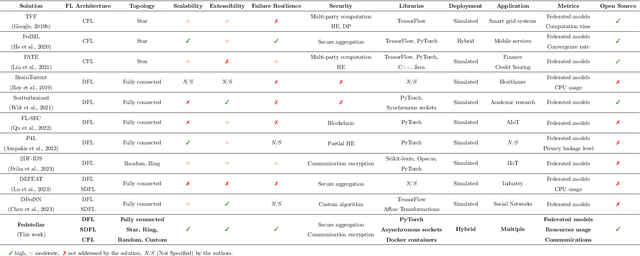
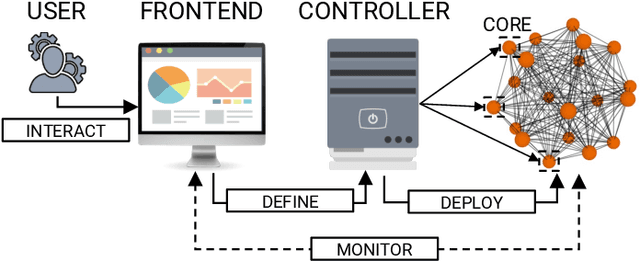
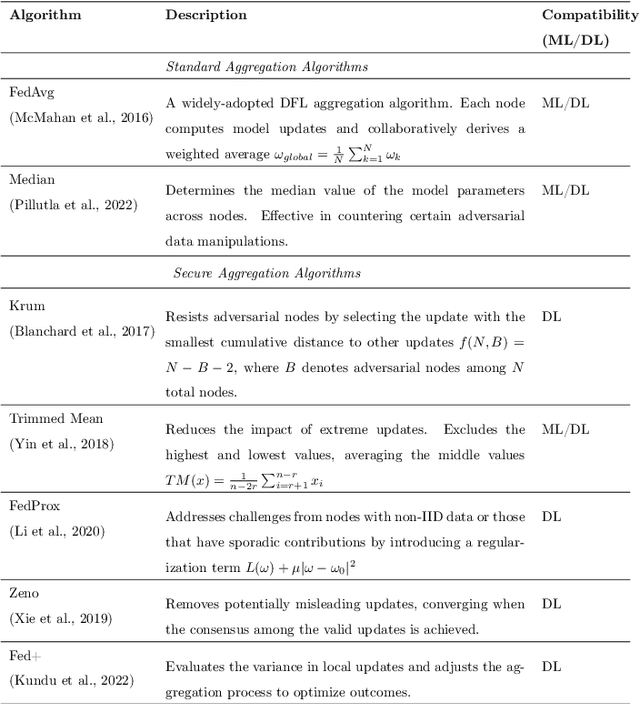
Abstract:In 2016, Google proposed Federated Learning (FL) as a novel paradigm to train Machine Learning (ML) models across the participants of a federation while preserving data privacy. Since its birth, Centralized FL (CFL) has been the most used approach, where a central entity aggregates participants' models to create a global one. However, CFL presents limitations such as communication bottlenecks, single point of failure, and reliance on a central server. Decentralized Federated Learning (DFL) addresses these issues by enabling decentralized model aggregation and minimizing dependency on a central entity. Despite these advances, current platforms training DFL models struggle with key issues such as managing heterogeneous federation network topologies. To overcome these challenges, this paper presents Fedstellar, a novel platform designed to train FL models in a decentralized, semi-decentralized, and centralized fashion across diverse federations of physical or virtualized devices. The Fedstellar implementation encompasses a web application with an interactive graphical interface, a controller for deploying federations of nodes using physical or virtual devices, and a core deployed on each device which provides the logic needed to train, aggregate, and communicate in the network. The effectiveness of the platform has been demonstrated in two scenarios: a physical deployment involving single-board devices such as Raspberry Pis for detecting cyberattacks, and a virtualized deployment comparing various FL approaches in a controlled environment using MNIST and CIFAR-10 datasets. In both scenarios, Fedstellar demonstrated consistent performance and adaptability, achieving F1 scores of 91%, 98%, and 91.2% using DFL for detecting cyberattacks and classifying MNIST and CIFAR-10, respectively, reducing training time by 32% compared to centralized approaches.
FederatedTrust: A Solution for Trustworthy Federated Learning
Feb 20, 2023Abstract:With the ever-widening spread of the Internet of Things (IoT) and Edge Computing paradigms, centralized Machine and Deep Learning (ML/DL) have become challenging due to existing distributed data silos containing sensitive information. The rising concern for data privacy is promoting the development of collaborative and privacy-preserving ML/DL techniques such as Federated Learning (FL). FL enables data privacy by design since the local data of participants are not exposed during the creation of the global and collaborative model. However, data privacy and performance are no longer sufficient, and there is a real necessity to trust model predictions. The literature has proposed some works on trustworthy ML/DL (without data privacy), where robustness, fairness, explainability, and accountability are identified as relevant pillars. However, more efforts are needed to identify trustworthiness pillars and evaluation metrics relevant to FL models and to create solutions computing the trustworthiness level of FL models. Thus, this work analyzes the existing requirements for trustworthiness evaluation in FL and proposes a comprehensive taxonomy of six pillars (privacy, robustness, fairness, explainability, accountability, and federation) with notions and more than 30 metrics for computing the trustworthiness of FL models. Then, an algorithm called FederatedTrust has been designed according to the pillars and metrics identified in the previous taxonomy to compute the trustworthiness score of FL models. A prototype of FederatedTrust has been implemented and deployed into the learning process of FederatedScope, a well-known FL framework. Finally, four experiments performed with different configurations of FederatedScope using the FEMNIST dataset under different federation configurations demonstrated the usefulness of FederatedTrust when computing the trustworthiness of FL models.
RL and Fingerprinting to Select Moving Target Defense Mechanisms for Zero-day Attacks in IoT
Dec 30, 2022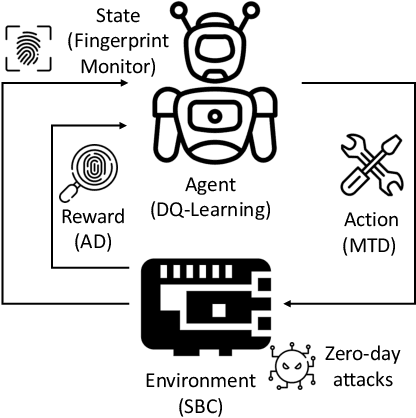
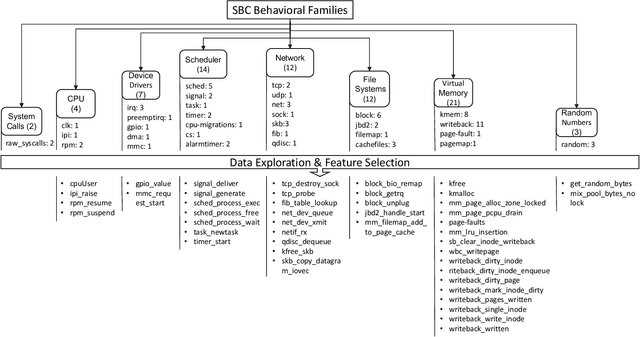
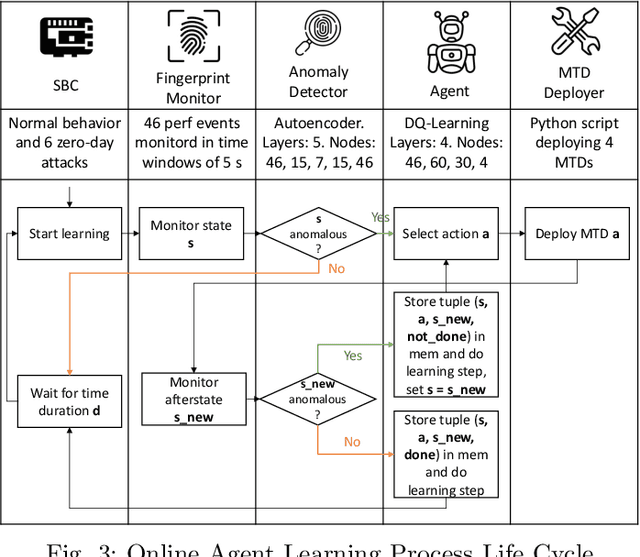
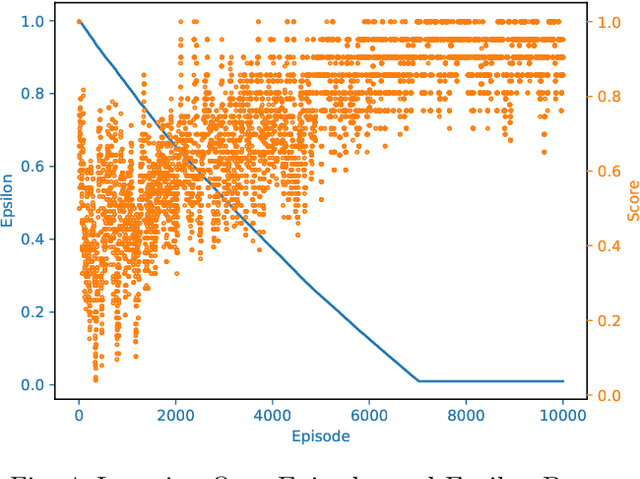
Abstract:Cybercriminals are moving towards zero-day attacks affecting resource-constrained devices such as single-board computers (SBC). Assuming that perfect security is unrealistic, Moving Target Defense (MTD) is a promising approach to mitigate attacks by dynamically altering target attack surfaces. Still, selecting suitable MTD techniques for zero-day attacks is an open challenge. Reinforcement Learning (RL) could be an effective approach to optimize the MTD selection through trial and error, but the literature fails when i) evaluating the performance of RL and MTD solutions in real-world scenarios, ii) studying whether behavioral fingerprinting is suitable for representing SBC's states, and iii) calculating the consumption of resources in SBC. To improve these limitations, the work at hand proposes an online RL-based framework to learn the correct MTD mechanisms mitigating heterogeneous zero-day attacks in SBC. The framework considers behavioral fingerprinting to represent SBCs' states and RL to learn MTD techniques that mitigate each malicious state. It has been deployed on a real IoT crowdsensing scenario with a Raspberry Pi acting as a spectrum sensor. More in detail, the Raspberry Pi has been infected with different samples of command and control malware, rootkits, and ransomware to later select between four existing MTD techniques. A set of experiments demonstrated the suitability of the framework to learn proper MTD techniques mitigating all attacks (except a harmfulness rootkit) while consuming <1 MB of storage and utilizing <55% CPU and <80% RAM.
 Add to Chrome
Add to Chrome Add to Firefox
Add to Firefox Add to Edge
Add to Edge